#Visit the Railway Museum
Explore tagged Tumblr posts
Text
#TwoForTuesday + #TerrierTuesday: 2 of the goodest boys in DC!

1 Fala (Scottish terrier, d. 1952), a favorite pet of FDR. Bronze sculpture by Neal Estern at the FDR Memorial.

2 Owney (terrier mix, d. 1897), mascot of the Railway Mail Service & USPS. Bronze sculpture by Daniel C. Brown at the Smithsonian National Postal Museum.
#animals in art#American art#20th century art#contemporary art#bronze#sculpture#dog#dogs#dogs in art#pet#pets#pets in art#mascot#USPS#Railway Mail Service#FDR#FDR Memorial#Smithsonian Postal Museum#museum visit#memorial visit#Two for Tuesday#Terrier Tuesday
17 notes
·
View notes
Text
youtube
3 great places to visit on the Isle of Wight ☀️
#isle of wight#history#photography#wight#wightwanderer#iow#youtube#holiday#vacation#steam#railway#beach#sunny#summer#coast#museum#places#visit
1 note
·
View note
Text

The French Fleet, Cherbourg, August 4-6, 1858
The photograph depicts a fleet of French naval ships in the harbor of Cherbourg in Normandy, France. The occasion is the inauguration of the harbor as well as a new railway line linking the town to Paris. Between August 3 and 21, 1858, Emperor Napoleon III and Empress Eugénie visited Brittany and Normandy, anchoring at Cherbourg between August 4 and 8, which is when this photograph was taken.
Getty Museum
158 notes
·
View notes
Text
[here's a little taste of a multi-chapter clegan post-war fic I've been working on. note: I've taken creative liberties with the timeline and John and Gale's post-war lives. it's very much intentional]
Winter 1948
Marjorie Cleven dies on a Tuesday in December, two weeks before Christmas Eve.
John gets the call a few days later. Gale’s voice is steady on the other end of the line, but John knows his heart is broken. It’s the first time they’ve spoken since Marge got sick. After the wedding, there had been some letters exchanged, few and far between, but John has always been a crummy pen pal. There were reunions, but those were annual at most, and John rarely stuck around past a couple of drinks and a war story or two. When they got back stateside in ‘45, he thought the distance would be good for Gale, thought it would help put their past far behind them.
Now, in hindsight, it seems futile. John feels it all rushing back, like VE Day was just yesterday and Gale’s boots are still underneath his bed.
It’s warm in southern Florida. The sun beams down on the tarmac, hot enough to fry an egg on the airfield, sunny-side-up. John watches from the control tower as planes taxi below him. His trainees will be on furlough soon, but he won’t be going home for Christmas this year. Any excuse to maintain the two thousand miles between him and Gale.
It doesn’t last. John should’ve known he could never keep away for long.
Spring 1949
The back of the cab smells like menthol cigarettes and cheap cologne. John drums his fingers against his thigh, feeling suddenly restricted by his uniform now that he’s been let loose in the civilian world. Laramie, Wyoming passes by his window, a cluster of shops and banks and schools on a stretch of agricultural land bisected by historical railways and boxed in by mountains on all sides. The air is thinner here than in Manitowoc, and there are no waterfronts to be found. The terra firma is dusty and brown, the sun a sepia pinprick hanging low in the sky.
The cab weaves through neighbourhoods of modest-looking houses. John had handed the driver the address on a slip of yellowy paper, which Gale had relayed over the phone. John doesn’t know how close they are to his destination, but he can feel his anxiety rising like bile in his throat. He makes nervous conversation, the driver mentioning the geology museum, the fact that the town was named after a French fur trapper who disappeared somewhere in the mountains. It doesn’t do much to calm John’s nerves.
“What brings you to Laramie?” the driver asks, glancing up at the rear-view mirror to get a glimpse of John.
He’s young, probably around Gale’s age. Young enough to have served at least, but he doesn’t comment on John’s uniform. He just peers at him curiously, eyes darting back and forth from the road.
“Visiting an old friend,” John says and tries not to squirm uncomfortably under his gaze. “He goes to school here.”
A moment later, the cab slows to a halt outside of a quaint-looking bungalow. John regards it from his window: white siding, yellow door, slate roof. Rose bushes line the walk-up, not yet blooming, and the grass has recently been mowed.
“Thanks,” John says, fishing a few bills from his pocket and handing them to the driver. “Keep the change.”
The driver smiles at him, close-mouthed, and pops the trunk. John slowly gets out of the car, like he’s trying to delay the inevitable, then fetches his suitcase from the back. He rests it on the sidewalk for a moment while the cab speeds away, looking at the house once more. A gaggle of kids darts down the street on bicycles. A few doors down, a lawnmower springs to life. It’s picturesque, like a postcard Gale might’ve sent him a few years back. John immediately feels out of place, still used to Nissen huts and crowded mess halls and military time. If he wants to turn back, now’s his chance, but he picks up his suitcase from the ground and forces his feet forward, climbing up the porch steps.
He thumbs the doorbell and it chimes. A dog barks gruffly inside the house. John removes his cap from his head and smoothes out his hair. He feels ridiculous, like a socially awkward teenager picking up his sweetheart for prom. His heart is in his throat as the door opens gradually, almost startling as a golden retriever pokes its head through the opening. It squeezes outside and dashes into the yard, yelping happily.
“Archie, get back here!”
John recognizes that voice. The door opens all the way, and suddenly, Gale is standing in front of him. Everything John had thought to say on his way over dies on his tongue. Gale looks practically the same, if not a bit filled out in his middle than he was during the war. His cheeks are smooth and shaven, flaxen hair styled off his forehead in a coif. John could never get used to seeing Gale in civilian clothes, but that’s how he appears in front of him now, crisp, white button-down hanging off his shoulders, navy slacks belted around his waist and brown cap-toe shoes on his feet.
They look at each other for a moment, unspeaking, then a smile splits Gale’s face in two. “Hello stranger,” he says.
“Gale.” John can’t help but return his grin. “Well, I’ll be damned.”
He holds out his hand for Gale to shake it, but Gale takes one look at his outstretched palm and instead, pulls John into a hug. It surprises John, so much so that almost all the air shoots out of his lungs at the contact. Gale’s fingers meld into the muscle of John’s back. It takes John a moment, but he eventually returns the gesture, squeezing Gale gently. They part and Gale turns his attention towards the dog, Archie, who’s taken it upon himself to start digging around in the garden.
Gale whistles. “Come here, boy,” he shouts, clapping his hands, and Archie bounds over.
He pauses to sniff John’s shoes. John crouches down and pats the dog, rubbing his ears, and is instantly reminded of Meatball.
“He’s usually not so ill-behaved,” Gale says. “He gets excited around visitors.”
“I don’t mind,” John replies, smiling down at the dog.
Archie pants, long, pink tongue hanging from his mouth, then he retreats back inside the house. Gale reaches down and picks up John’s suitcase from the porch. John straightens. They look at each other again, a bit too long without words to be comfortable, but John knows they’re both adjusting to being in close proximity again after so long.
“Lead the way,” he says, motioning towards the open front door.
Gale seems to snap out of it. “Of course, come on in.”
John steps inside the foyer and closes the door behind him. The interior is small, but well-decorated and tidy. The ocean blue walls are hung with artwork, the hardwood floors carpeted with rugs. John sets his cap down on a table peppered with framed photographs but doesn’t stop to look at any of them. He follows Gale past the dining room, down a hallway, and through the kitchen to another hallway at the back of the house. Gale opens one of the four doors that line the hall and carries the suitcase inside. John peeks his head into the guest bedroom. A double bed sits against the far wall, night tables on either side of it that host brass lamps with cream shades. On the other end of the room is a cherry wood wardrobe and an armchair to its left, upholstered in a muted green. Above it lies a square window, lace curtains pulled together to drown out the harsh afternoon light. The bedroom is sparse and unlived in, like most guest bedrooms are, but John appreciates it just the same.
“Hopefully this suits you alright,” Gale says, setting the suitcase down beside the bed.
John nods. “Suits me just fine,” he says. “Better than what I have back at base. That’s for sure.”
Gale looks at him. An emotion John can’t exactly pinpoint passes over Gale’s face, something like recognition, bordering on wistfulness.
They return to the kitchen, and Gale beckons John to sit down at a round table in the corner. Archie laps water from a bowl as Gale putters around the kitchen, opening cabinets. He appears tense, but not in his usual stiff, reserved way. His energy is almost jittery, nervous, and he taps a rhythm on the countertop. It’s not like him, at least not like the Gale John knew during the war. He pretends not to notice.
“So, how was your flight?” Gale asks eventually.
“Good,” John says and adjusts his uniform, crossing his legs. “Felt strange not being the one flying the plane.”
“I’ll bet,” Gale replies with a suggestion of a smile. “Do you want something to eat? Some coffee?” He reaches into the cabinet and produces a tin of Foldgers.
“Just coffee, thanks,” John says.
He looks around the kitchen as Gale spoons coffee grounds into the machine. His eyes trace the checkered red wallpaper, the white-tiled backsplash, the laminate countertops, the icebox in the corner. He’s never seen Gale in such a domestic setting, not even during the wedding. Maybe that’s why he stayed away for so long, even when he was invited time and time again. Perhaps he didn’t want to experience Gale so far removed from the world they both inhabited for so many years, a world where the only people they could rely on were their men and each other. Now, there’s no avoiding it. It’s all laid out for John to see.
The coffee maker beeps and steams. Gale rests his elbows against the kitchen counter and looks over in John’s general direction, but doesn’t quite meet his eyes. John doesn’t know what to say to him. He doesn’t know how to fall back into the easy camaraderie they had at the beginning, before the stalag, before the march, before the end of the war. Seeing Gale has ushered back a slew of emotions John has been distancing himself from since they parted ways four years ago. He feels like an intruder in Gale’s home, looking for Marge in the corners of the room but not finding her. Guilt stirs in his stomach, and he asks himself again what the hell he’s doing here. This isn’t his place. This isn’t his life.
“How’s training?” Gale asks. “Are the boys following their orders, Lieutenant Colonel?”
John smirks at that, partly to hide his discomfort. It feels wrong that he should outrank Gale after everything they’ve been through, flight school, then serving together, then imprisonment.
“It’s busy,” John replies and drums his fingers against the table. “They’re good kids. Fucking caterpillars though. So damn young.”
Gale smiles softly. “Were we ever that young?”
“Maybe you were,” John quips. “I feel like my bones have been creaking since before our war even started.”
Gale laughs, and the sound hits John like a fist to his sternum. He realizes suddenly that he’s missed Gale’s laugh so goddamn much. It rings in his ears, out-of-reach and yet familiar, like a favourite song of his he hasn’t heard in years has come on the radio out of the blue. For a brief moment, John regrets denying himself this for so long, even if it was the only way he could get on with his life.
“How’s school?” John asks in turn. “Master’s coming along?”
“Yeah, it’s good,” Gale says, nodding. “I like my classes. Lots of grading, lots of writing, some teaching. I’ve got a meeting on Tuesday with my advisor about my thesis.”
“Well, well, look at that,” John says, the corner of his lips twisting into a grin. “Professor Cleven.”
Gale dips his chin towards his chest, almost shy. “Not just yet, John.”
“You’re getting there,” John says. “Y’know Marge wrote to me about your thesis a year or so back, not that I understood a word. Astrophysics, not exactly my wheelhouse.”
Gale’s face falters imperceptibly at the mention of his late wife’s name, and John immediately feels apologetic for bringing her up without much warning.
“It’s not done yet,” Gale says flatly, his gaze falling from John’s face to look at his interlocked fingers resting on top of the counter. “You can read what I have though if you’d like.”
“Yeah, I might,” John says and grimaces at his own inadeptness while Gale’s eyes are elsewhere.
The coffee maker beeps and Gale goes to it, removing two mugs from the cabinet and setting them down beside it. He takes the sugar out of the cupboard and the cream from the icebox.
John bites the inside of his cheek, knowing what he needs to say but unsure if he has it in him to say it. “Buck?”
Gale’s head snaps up at the sound of the nickname. He regards John with a puzzled look, like he’s no longer used to being called anything other than Gale to his face. The name is a relic from a different time, John supposes, something that belonged to them only, and when John was no longer around to use it, there was no one else around to take up the task.
After a moment, the expression on Gale’s face smoothes out. “What is it, Bucky?”
John swallows, then pushes the words out. “I’m sorry, y’know, that I, uh, I couldn’t make it. To the funeral.”
Gale looks at him for a moment, then his face softens. “It’s alright,” he says. “Marge didn’t much like being the centre of attention anyway.” He pours coffee into the two mugs, then adds sugar to one and cream to the other. “My mother-in-law appreciated the flowers you sent.”
“Oh, good,” John says. “Azaleas were Marge’s favourite, right? I remember them from her wedding bouquet.”
Gale’s eyes grow heavy with sadness. He nods. “Yeah, they were.”
As if on cue, John hears a grumbly cry coming from one of the bedrooms down the hall. It starts off quiet, like a baby stirring from sleep, then gradually gets louder until it becomes a full-blown wail. Archie’s ears perk up before he quickly sulks away.
“Sorry,” Gale says as he grips the coffee with sugar and hands it to John. “I just put her down for her afternoon nap, but she’s in that phase where she’s rebelling against sleep.”
John says nothing, frozen in his seat as Gale crosses the kitchen into the hallway and slips inside the bedroom. John had been so caught up in seeing Gale again that he’d almost forgotten. He stares into the inky well of his coffee, too stunned to drink from it.
Gale emerges a moment later with a bundle in his arms. Now calm, the little girl clings to him, her head tucked into the crook of Gale’s neck as she sucks her thumb into her mouth. She’s wearing cream-coloured footie pyjamas with pink roses on them, her curly blonde hair tangled from sleep. Gale draws circles against her back, rocking her slightly from side-to-side. John regards her carefully. She must be at least a year and a half now, much bigger than she was in the pictures Gale had sent him however long ago.
Gale approaches the table where John is sitting. “Lucy, this is your Uncle Bucky,” he says, pointing over at John. “Can you say hello?”
Lucy turns her head and looks straight at John, and John sees the Marge in her face right away, the slight upturn of her nose, the fullness of her cheeks, the pink purse of her lips, but her eyes are all Gale, blue and round and yawning. She quickly looks away, hiding her face back in her father’s neck.
“Sorry,” Gale says again and rubs her back. “She gets shy around strangers.”
John doesn’t expect it to, but the comment stings. The fact that any child of Gale’s could be a stranger to him is borderline unforgivable.
[To be continued...]
168 notes
·
View notes
Photo




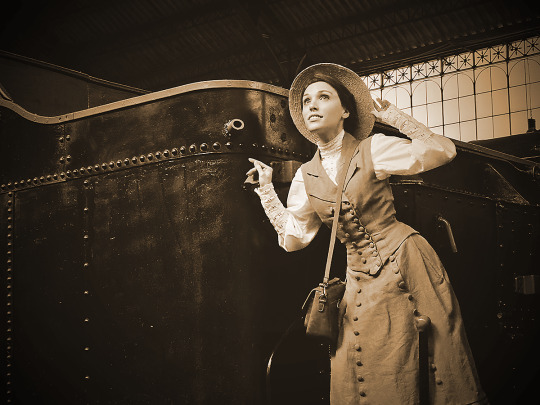

We visited the Railway Museum! 🚂
#Nips photos#we love trains 😭#I also got video of this!! I'll edit it eventually#the video quality of my new phone is amazing I'm so happy#it was such a fun day a bunch of people complimented our outfits and we chatted and even took pictures with a kid and his mom!!#people were like 'oh time travelers!' 'you guys got off the train in the wrong era!'#it was very cute#if you are very introverted and struggle to start conversations with people I recommend dressing up lmao#personal
510 notes
·
View notes
Note
I hear you're a durango and silverton narrow guage railway enjoyer 👀🚂 I spend a lot of time at the depot/museum because my dad works there as a veteran fireman, engineer, and safety advisor, and our family friend runs the museum! If you ever get to southwest Colorado, riding the train is absolutely a must - they also do a polar express overlay in the winter, which is so fun. You didn't hear it from me, but a few weeks ago when I was visiting, Kevin Costner was using the depot to film bits for his new western trilogy, and my dad helped out on set aboard the engine. Choo choo!!! (big fan of taffy train btw I adore all your art!!!)
A CELEBRITY IN MY INBOX WHAT A BLESSED DAY IT IS you know Taffy Train?! A thousand angels sing in chorus. Train stans win forever.
#SADLY UNLIKELY TO EVER BE THERE I am in UK and miserable about it orz#but keep up the good work that's super cool!!!#waughhhh... cool irl train people like taffy... im so ;v;
57 notes
·
View notes
Text
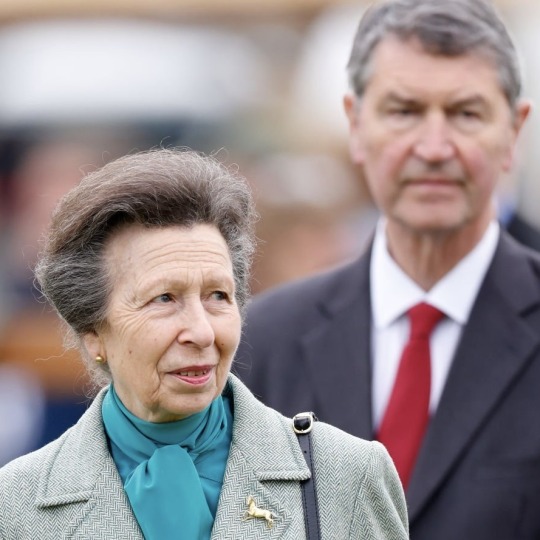

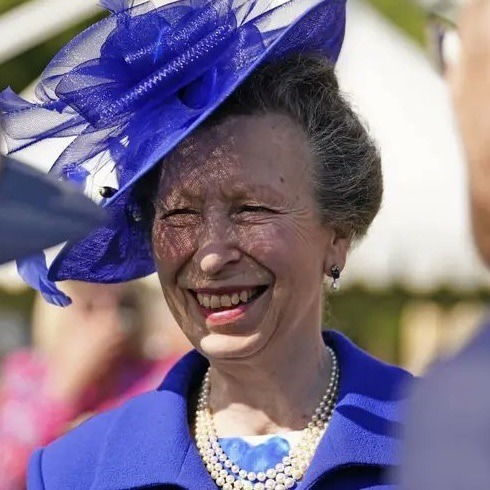
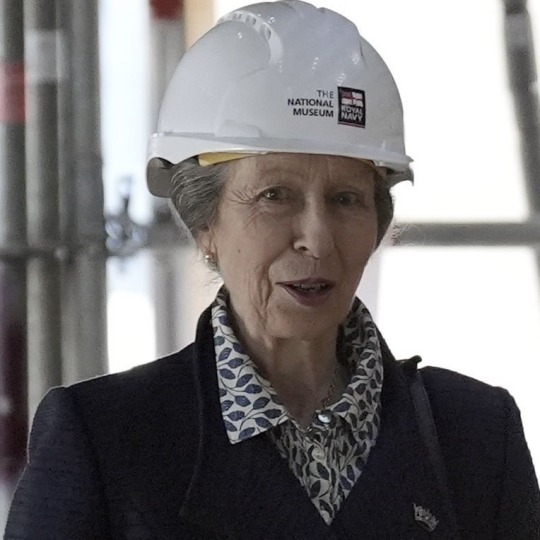
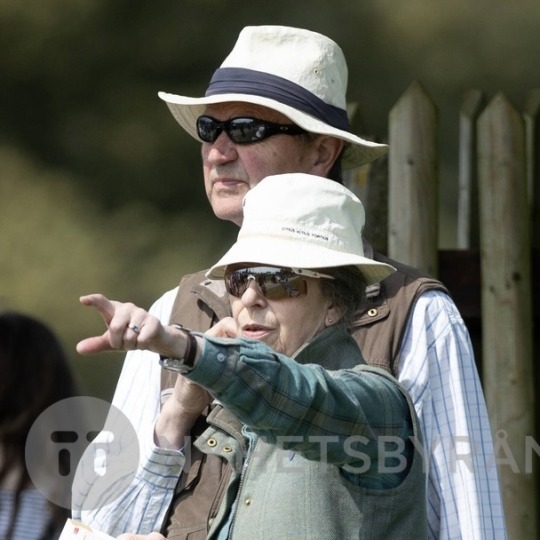

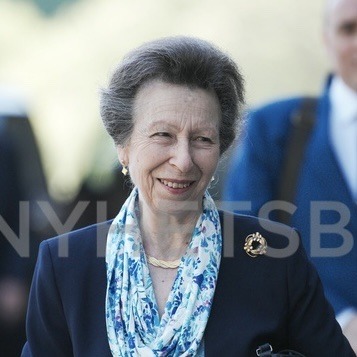
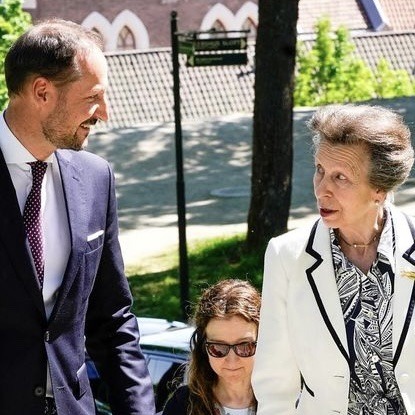
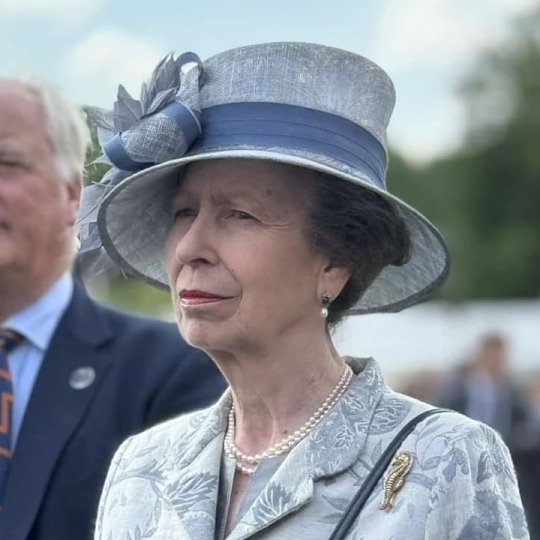
The Princess Royal’s Official Engagements in May 2024
01/05 On behalf of The King, held an Investiture at Buckingham Palace. 🎖️
As President of the City and Guilds of London Institute, attended The Princess Royal Training Awards Alumni Skills Summit at Guildhall. 🏆
With Sir Tim As Patron of the Whitley Fund for Nature, attended the Annual Whitley Awards Ceremony at the Royal Geographical Society. 🦋
02/05 With Sir Tim Named a Great Western Railway Intercity Express Train ‘HRH The Princess Royal’ at Paddington Railway Station. 🚉
Unofficial With Sir Tim Attended day two of the Royal Windsor Horse Show. 🐎
03/05 With Sir Tim Departed the UK from Stansted Airport for Canada and arrived at Vancouver International Airport
HRH, as Commodore-in-Chief of the Royal Canadian Navy (Pacific Fleet), with Sir Tim, carried out engagements in Vancouver;
Attended the Commissioning Ceremony for HMCS MAX BERNAYS at North Vancouver Burrard Drydock, before attending a Reception onboard. ⛴️ 🇨🇦
Attended a Dinner onboard HMCS MAX BERNAYS at sea. 🍽️
04/05 HRH, as Commodore-in-Chief of the Royal Canadian Navy (Pacific Fleet), with Sir Tim, carried out engagements in Victoria;
Toured HMCS Max Bernays at sea. 🌊
Visited Esquimalt Military Family Resource Centre at the Canadian Forces Base Esquimalt. 👪🪖
As President of the Commonwealth War Graves Commission, visited God’s Acre Cemetery and laid a wreath at the Memorial. 🌹
Visited the Maritime Museum of British Columbia Archive. 📜⚓️
Her Royal Highness afterwards visited Fed Urban Agriculture Society Urban Farm, 395 Harbour Road. 🌾
Attended a Reception given by the Lieutenant Governor of British Columbia (the Hon Janet Austin) at Government House. 🥂
Attended a Dinner given by the Lieutenant Governor of British Columbia at Government House. 🍽️
05/05 HRH, as Commodore-in-Chief of the Royal Canadian Navy (Pacific Fleet), with Sir Tim, carried out engagements in Victoria;
Visited Government House Gardens. 🪴⛲️
Attended the Battle of the Atlantic Memorial Parade at the Parliament Building and laid a wreath at the Cenotaph before taking the salute at the march past of Canadian Armed Forces Veterans, Serving Personnel and Cadets. 🫡
Attended a Royal Victoria Yacht Club Youth Dinghy Regatta. 🛥️
As Patron of the Canadian Therapeutic Riding Association, visited Victoria Therapeutic Riding Association. 🐎
Departed Vancouver International Airport for the United Kingdom. 🇨🇦✈️🇬🇧
06/05 Arrived at Heathrow Airport from Canada 🇨🇦✈️🇬🇧
08/05 Hosted a garden party at Buckingham Palace alongside The King and Queen, The Duke and Duchess of Edinburgh and The Duke and Duchess of Gloucester. 🍃☀️🪴
As Patron of the Woolf Institute, attended a Reception, followed by a Dinner, to launch the Randeree End of Life Programme. 🥂🍽️
09/05 As Patron of the Royal Navy and Royal Marines Charity, visited the Headquarters at HMS Excellent in Portsmouth. ⚓️
As Patron of the Women’s Royal Naval Service Benevolent Trust, attended the Annual Presentation and Reception at the National Museum of the Royal Navy. 🏛️
As Patron of the Association of Wrens, opened the new Headquarters Building at Lanyard House, HM Naval Base. 🫡
With Sir Tim As Patron of the National Museum of the Royal Navy, visited the HMS Victory Conservation Project at HM Naval Base ⚓️
With Sir Tim As Patron of the National Museum of the Royal Navy, attended the HMS Victory Conservation Project Dinner onboard HMS Victory at HM Naval Base. ⚓️🍽️
10/05 As Patron of Catch22, visited Greater Manchester Victims’ Services at Greater Manchester Police Headquarters. 👮
Visited the East Manchester Community Boat Project at Portland Basin Museum Marina in Ashton-Under-Lyne to mark its 30th Anniversary. 🛥️🎂
11/05 unofficial With Sir Tim Went to Badminton Horse Trials to cheer on Zara Tindall in her Cross Country stage of the three day event. 🏇🏼
13/05 Visited Stonehaven Open Air Swimming Pool to mark its 90th Anniversary. 🏊♀️🍾🏴
As Admiral of the Sea Cadet Corps and Marine Society and Sea Cadets, opened Stonehaven and District New Headquarters. ⚓️🫡 🏴
14/05 With Sir Tim As Patron of the United Kingdom Sailing Academy held a Founders’ Club Luncheon at St James’s Palace. ⛵️
As Chancellor of the University of London, attended the King’s Centre for Military Health Research Conference. 👩⚕️
With Sir Tim As Patron of the Wellington Trust, attended a Dinner onboard HMS WELLINGTON (mto mark the Ship’s Ninetieth Anniversary. ⚓️🥂
15/05 As Court Member of the Fishmongers’ Company, visited Glenarm Organic Salmon Fish Farm, off Glenarm Harbour in Ballymena. 🍣🚤
As Court Member of the Fishmongers’ Company, attended a Luncheon at Glenarm Castle. 🐟🍽️🏰
16/05 As Royal Patron of the National Coastwatch Institution, visited Bembridge Station, followed by a Reception at Brading Haven Yacht Club in Ryde, Isle of Wight. 🔍🌊
As President, Royal Yachting Association, opened the Sea View Yacht Club's Training Centre in Seaview, Isle of Wight. 🛥️
17/05 With Sir Tim Hosted the annual Not Forgotten Association garden party at Buckingham Palace. 🫖🍰☀️
20/05 unofficial Departed from RAF Brize Norton for Norway and landed at Oslo Gardermoen Airport. 🇬🇧✈️🇳🇴
21/05 As Patron of the Anglo-Norwegian Resistance Commemoration Project, visited the Norwegian Industrial Workers Museum in Vemork, Norway. 🔨⚙️🇳🇴
As Patron of the Anglo-Norwegian Resistance Commemoration Project, received a briefing on the sinking of DF Hydro at Mael Station in Telemark, Norway. 🏭🇳🇴
Attended a Reception given by His Majesty’s Ambassador to the Kingdom of Norway at the Residence in Oslo. 🥂🇳🇴🇬🇧
22/05 As President of the Commonwealth War Graves Commission, visited Vestre Gravlund Cemetery and laid a wreath on the memorial. 🪦
As Patron of the Anglo-Norwegian Resistance Commemoration Project, visited the Linge Club and attended a Reception at Akershus Fortress, Oslo. 🇳🇴🇬🇧
As Patron of the Anglo-Norwegian Resistance Commemoration Project, visited the Norwegian Shipowners’ Mutual War Risks Insurance Association. 🪖🇳🇴
As Patron of the Anglo-Norwegian Resistance Commemoration Project, with The Crown Prince of Norway, visited the Norwegian Resistance Museum, Akershus Fortress. 🏰 🇳🇴
unofficial Departed from Oslo Gardermoen Airport and landed at RAF Brize Norton . 🇬🇧✈️🇳🇴
23/05 As Patron of the Hornet Services Sailing Club, visited the club for their 60th anniversary. ⛵️🎂
Opened the Army Sailing Association Offshore Centre in Gosport. ⛵️
With Sir Tim & Duke of Kent Held a Garden Party at Buckingham Palace to celebrate the Royal National Lifeboat Institution's 200th anniversary. 🛟☕️
With Sir Tim Visited the Royal Horticultural Society Chelsea Flower Show at the Royal Hospital Chelsea. 🌸🌺🌼💐
24/05 Opened the Admiral Lord Cochrane Room at the Royal United Services Institute in Whitehall, London. 🔐
Sometime in May unofficial Sir Tim, as Chair of Trustees, attended the Science Museum Groups annual dinner
Total official engagements for Anne in May: 53
2024 total so far: 224
Total official engagements accompanied by Tim in May: 23
2024 total so far: 55
FYI - due to certain royal family members being off ill/in recovery I won't be posting everyone's engagement counts out of respect, I am continuing to count them and release the totals at the end of the year.
#a very busy month!!!#i loved her visits to canada and norway!!!#very excited for june!#aimees unofficial engagement count 2024#may 2024#princess anne#princess royal#tim laurence#timothy laurence
41 notes
·
View notes
Text
Traintober 2023: Day 1 - Free Day
Preservation on Sodor:
Sodor must be one of the most interesting places to look at when it comes to railway preservation, if not also road, sea and air preservation. For starters, the island’s railways are all still primarily run by vintage steam traction – but there’s also Harold, who is in his 60s or 70s at this point, Bertie the bus (who is nearing 100), Trevor and Terrence and George – not to mention the fact that the island seems to continue to have antique ships within its waters, including steam ships and fishing trawlers.
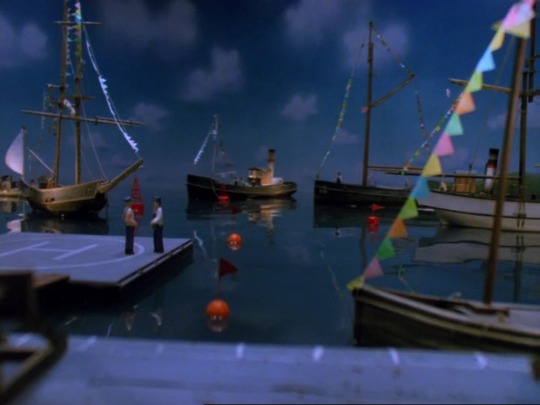
But of course, I want to focus on the railways – and in particular how Sodor must be the British hub for heritage railways, museums and other attractions. For starters, Sodor has by far the largest heritage railway system in the world for its size, with over 80 miles of mainline, several branchlines, a narrow-gauge railway, a mountain railway and a miniature gauge railway. It also has a massive fleet of engines – 80 by the Reverend’s count on the NWR alone – making it possibly the single largest working heritage railway in the UK, if not Europe. This would instantly attract many preservationists wishing to run their locomotives, meaning that mainline excursions and visitors would be a frequent sight on the island. This in turn would bring in tourists, who would make money for the NWR and the railway the engines belong to, as well as helping the Fat Controller if one of his enignes is unable to work. It would also give us as railfans the chance to see unique motive power on a variety of trains - like a Coronation Class pulling a slow goods, or a Hughes Crab on a China Clay train - things we don't get to see anymore.

Furthermore, Sodor is home to Crovan’s Gate Works, the largest steamworks of its kind in Britain. For its influence, I am going to turn to 60163 Tornado. When Tornado was built, her boiler had to be manufactured in Germany because there was just no one in the UK able to produce a boiler of the type, while the superheater header needed to be attempted by three foundries before it was assembled correctly. Crovan’s Gate Works, which is able to maintain a full fleet of engines including Gordon – who is also an A1 with many similarities – would have been able to do both in a far timelier manner. The same would go for all locomotive repair programs in the UK. Crovan’s Gate would either host locomotives or manufacture parts for them, becoming a hub for preservation across the country. Engines like Stepney or Green Arrow would be able to be overhauled at the Works, rather than be taken out of service. This would effect how many steam engines are in working order in Britain, if not Europe, as the refurbishment time would be significantly shortened - something that is compounded if said locomotive shares any components with a Sodor engine - like Talyllyn, Dolgoch, Flying Scotsman or any of the Black 5s, Panniers or Autotanks in preservation.
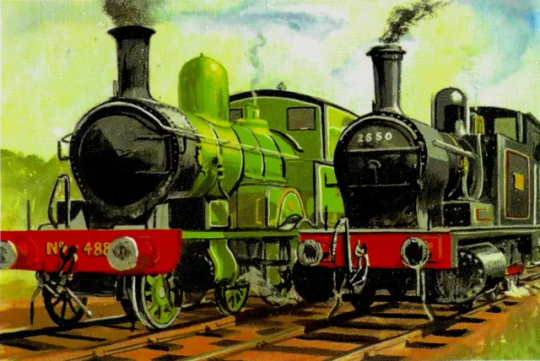
This brings me on to the last point: International Tourism. Sodor must be one of the most visited locations in Britain in this universe. For starters, there’s all the fans of the book and TV series (which are both canon and referenced in the books). This means that Sodor would have tens of thousands of families coming to the island from around the world annually to see the ‘Eight Famous Engines’ or the ‘Steam Team’, bringing in a massive amount of revenue for hotels, local businesses and the railways themselves. But there would also be the railfans who come with the aforementioned railtours, as well as international railfans who want to see steam in action in a mainline setting – something nearly impossible anywhere on the planet. Sodor has at least one airport (and probably two, considering in real life there is an airport on Walney Island near the real-life Vickerstown), six ports connected to the NWR, and a rail and road link to the UK. The island has the infrastructure to handle the flocks of tourists, and this would in turn benefit much of the rest of Northern England. This would majorly benefit the preservation world by bringing in funding for Sodor, which is in turn able to fund things like track upgrades, or overhauls for engines beyond their own railway. It also gives other railways a good place to promote themselves, as Sodor has a guaranteed market for tourists who may travel to these other railways.
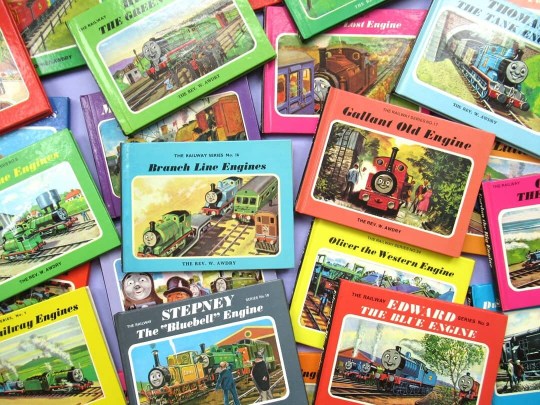
You cannot understate how much these books have done for Sodor, and for railway preservation as a whole.
So, Sodor is at the very least a centre for preservation in the UK, with railtours, overhauls and masses of international tourists – but it’s also where a lot of engines were likely rescued from. We see it in Oliver and Douglas, but engines know of Sodor and its safety. I can imagine an alternate universe in which engines keep turning up throughout the 1960s, being brought to safety on Sodor and then sold to heritage railways, being overhauled at Crovan’s Gate before moving to their new homes. Sodor would act as an intermediate in this era, being able to do the paperwork to preserve engines due to its position in the national network while also being aligned with the cause of the heritage railways. Sodor is a safe haven for steam, and this would have a significant impact on its position as a preservation hub for the UK.
Back to the Master Post
#railway series#weirdowithaquill#thomas the tank engine#railways#traintober 2023#railway preservation#rambles
106 notes
·
View notes
Text
Mallard and Dinah Gresley
LNER No 4468 and Dynamometer car No 902502

Mallard is the brother of Spencer and cousin to Gordon, Flying Scotsman, Henry, and Ryan. He also holds the title of the fastest steam engine, for which he was given a plaque. He is very proud of his record and his plaque. Due to his record, Mallard took up the position as the public face of the Gresley family while Flying Scotsman was stranded in the US.
Some time after this, Mallard was diagnosed as autistic, which he felt very embarrassed about in the beginning, while also relieved in some ways. This can make him rather blunt, often bordering on seeming rude, with unfamiliar engines, but he is conscious.
Mallard and Spencer were built around the same time, with Mallard being the elder of the two. For this reason, Mallard does not hold derogatory views about private engines as many on the mainland did and is just relieved that his brother is safe.
His visits to Sodor are not as frequent as he would like, but he makes the journey as often as he can to see his cousins. He looks up to and admires Gordon immensely, holding him in the highest regard, and while not so close as Spencer, he has a very friendly relationship with Ryan. He was also immediately accepting of Henry and Rebecca, and has good relationships with both.
The Flying Scotsman is a different story. Their relationship is similar to that of Gordon and Spencer, except without any of the friendliness in their rivalry. Scott incorrectly assumed that Mallard's taking over as family spokesman was deliberate and malicious, and made some very unpleasant remarks about Mallard's autism when they first reunited. Though attempts have been made to clear the air, their relationship needs more time to mend.
Dinah is the dynamometer car used to measure the 100MPH speeds of Flying Scotsman, and she also visited Sodor to verify Gordon's own 100MPH achievement. As such, she already had experience with the Gresley family when it was time to measure Mallard's speed and was the natural choice for him.
While Scott and Gordon had been courteous to her, Mallard took a genuine interest in what she was going to do and how she was to do it. After the excitement of achieving his legendary speed record, Mallard was very keen to make sure Dinah's work was acknowledged and made many excuses to spend time with her. His interest was very much reciprocated, and he and Dinah entered into a romantic relationship and married after a few years.
Mallard and Dinah currently live together at the National Railway Museum in York, where they are seen together on display. They have become spokespeople for the other engines and rolling stock at the museum and are currently very happy. There is hope among the other Gresleys - particularly Spencer - that they might start a family of their own some day. Given how happy they are to devote attention to Hope, Tyler, and Leon during visits, the chances seem high...
#biggsodorcitystories#bscs rambling#bscs art#ttte humanized#ttte#ttte mallard#ttte spencer#ttte dinah#mallard the fastest engine#dinah the dynamometer car#real trains#ttte humanisation
15 notes
·
View notes
Text










Wemmys Bay Train Station.
The Category A listed railway station opened in 1865, but the station was completely rebuilt in 1903 to accommodate the large number of passengers.
A key feature of the design is use of curves to ease the flow of passengers. The same principle was applied at Glasgow Central station, which was rebuilt about the same time.
The pier was designed so that several queues for the steamers could be accommodated, with different queues for different destinations. Although the ferry now only goes to Rothesay, Wemyss Bay used to have regular sailings to Largs and Millport, as well as day trips further afield.
One of the seats on the concourse, with an appropriate plaque on it, is an original Caledonian Railway seat, as would have been used when the station was new. It was obtained by the Friends of Wemyss Station when it became surplus to requirements at the National Railway Museum. It was received as withdrawn from use by British Rail, covered in many layers of paint and had to be professionally restored. I will have to have a wee look for it on my next visit.
22 notes
·
View notes
Text
by Dave Rich
On the other hand, some of those central London synagogues have got into the habit of changing their service times on days when there are anti-Israel demonstrations so their congregants can vacate the area before the protestors turn up; and there are usually police stationed outside, just in case. And a lot of other Jewish Londoners, the ones who live in the suburbs and might otherwise go into central London on a Saturday to shop, visit an exhibition or a museum or do whatever other people do in central London at the weekend, will be staying at home. So maybe not a no-go zone, but also not a normal, sustainable state of affairs.
It shouldn’t be hard to understand why this is the case. Imagine you are a Jewish person who lives in Golders Green. On the morning of Monday 9th October you woke up to find that somebody had painted “FREE PALESTINE” in massive letters across the two railway bridges that you walk under on your way to the tube station to get to work. I find it hard to believe it’s a coincidence that this happened in the best-known Jewish neighbourhood in the whole country: it looked very much like an attempt to intimidate the Jewish community.
Or perhaps you are one of the hundreds of British Jews who has had “Free Palestine” shouted at you in the street by a random stranger, in an act of racist hostility because they spotted a Jew. It’s unsurprising you might not want to put yourself in that same position again, but this time with tens of thousands shouting that same slogan.
I’ve written before about the unknowability of how many of these marchers are simply expressing genuine human rights concerns; how many are motivated by utter hatred of Israel; and how many are using it as a cloak for their antisemitism. We do know that all three types are present on most of these demonstrations, and we like to tell ourselves that the ones fuelled by hatred of Israel and Jews rather than compassion for Palestinians are in the minority, but really, who knows? Especially now that the hundreds of thousands of part-time protestors have drifted away and the demonstrations have reduced down to a hardcore of 20,000 or so true believers.
When people think of a “hate march” they tend to picture mobs of skinheads rampaging through neighbourhoods, beating up anyone they take a dislike to. Or perhaps violent jihadists seeking out their next terror victim. That is not what is happening in central London each weekend. These marches are mostly well-behaved with hardly any violence at all. If you are Jewish and happen to be standing by the side of the road as one of these marches passes by, you will probably be fine.
But a lot hinges on that word: “probably”. Nobody wants to be caught in the wrong place at the wrong time, and since 7 October there have been a lot more wrong places and wrong times for Jews than previously. Just ask Duche Sorotzkin, who was attacked in Trafalgar Square after one march.
40 notes
·
View notes
Note
How does the "Day Out with Thomas" engines work? Are they alive? Does any of them thought they were the real Thomas (or at least the Thomas from the show) at some point? Do Thomas considers them his siblings?
Put simply, they're actors. They visit Sodor to 'train' alongside Thomas and learn his mannerisms, ect. Theres actually a group chat with all of them in it. One of my stories, More than One, fatures several of them visiting for refresher training courses.
Specifically:
The Nene Valley Thomas

The Watercrss Line Thomas

and the Strasburg Thomas

Now, what do the engines get out of Playing Thomas? Alot acutualy.
DOWT is a lucrative event for any preservation line. So being rebuilt to be a Thomas helps your preservation line out immensly. Even in the world of my AU, Preservation still costs money. Being Thomas helps keep their home afloat, and their friends overhauled and in service.
East Anglian Railway Museum Thomas

2. It keeps you running. Many engines hate waiting for overhual, and as Thomas, you're at the front of the line. The railway can't afford to have you out for long periods.
Avon Valley Railway Thomas

3.Lots of Attenion. Some engines can be very vain things. having hundreds of children coming to your railway to see you? Theres a reason the NWR has to approve the engines for the role
Oigawa Railway Thomas

23 notes
·
View notes
Text
Off The Rails
Akaza: so this is our first time visiting York, where should we go?
Douma: How about the National Railway Museum?
Akaza: *stares at him in pure horror* absolutely not! *whispers urgently* do you know what Enmu could end up doing in the presence of all those trains?
Enmu: if it helps, I’m already permabanned from entering that establishment *grins*
Douma and Akaza: *stare at him in amazement*
Akaza: Enmu, what did you do?
Enmu: *continues smiling creepily*
Akaza: *increasingly concerned* What did you do???
Enmu: *giggles creepily*
Douma: wow… *equally impressed and appalled*
#demon slayer#kimetsu no yaiba#incorrect quotes#source: me#Enmu#Akaza#Douma#yeah Enmu would have a heyday in a place like that#and it would be disastrous#you do not want to know why he was permabanned#the implications are horrifying enough lmao
8 notes
·
View notes
Note
For the asks if it’s alright what’s your takes on Nia and Rebecca or any of the bwba international newbies?
Nia is the same basis as in canon. She was preserved after a usual working life, but she quickly grew bored of museum life. When Thomas came to Kenya on a world tour in 1997, she jumped at the chance to go to Sodor. After coming to Sodor once the tour ended in 1999, she became a utility engine. Personality-wise she is basically a mix of the way she was written in BWBA and AEG. She’s a clever and positive engine, but can be stubborn and reluctant to get rid of a plan.
I don’t have much for Rebecca yet, but she is basically the same as in BWBA. She came to Sodor in 1997 to help with faster trains. Gordon serves as a mentor to her. She is positive and tries to see the good in people, but often feels she can’t live up to those around her.
Most of the international characters live in their home countries and either met Thomas on his world tour or visited Sodor for an event like The Great Railway Show.
Some though live on Sodor-
Ashima, Rajiv, and Shankar are narrow gauge Indian locos. Ashima and Shankar work on the Skarloey, Rajiv lives in the Earl’s Railway Museum.



Gina is the shunter at Knapford Harbour. Her and Thomas tend to bicker.
Shane, Audrey, Aidan, Lorenzo, and Beppe are other exhibits in the Earl’s Railway Museum. Shane, Audrey, and Aidan also received a change in basis.


Ester is part of the Pack.
Ace moved to Elsbridge and is now a nuisance for everyone on Sodor.
Isla lives at Dryaw and still serves as an air ambulance.
Stefano is a ferry that stops at Kirk Ronan.

7 notes
·
View notes
Text
RWS Stanley Time: Museum Edition
In my posts about my Moving Forward AU, I’ve talked a lot about Stanley on the SKR. So here’s tidbits about his life at the museum!
———————————
-Stanley pulls visitor trains around the museum grounds. He doesn’t like being an indoor exhibit, but he can manage being stationary if visitors see him in his shed with the doors open.
-The museum primarily uses him as an example of a trench engine, educating its visitors about trench railways. As part of his job, he’ll explain his class and his WWI service to visitors.
-If guests ask about his MSR days, he’ll wince. But he’ll still talk about them. It’s important for people to know how railways used to treat their engines, even if it’s difficult to talk about.
-Stanley also shares embarrassing stories about the MSR management. Is it petty? Yes.
-Does he delight anyways in generations of children knowing That Time Manager Fell in a Scummy Pond Trying to Catch His Hat? Yes.
-It can be difficult for him to discuss WWI, too. But unlike the MSR management, he respected and befriended the soldiers. Those young men never left him behind. He wants to make sure people remember them — and what they endured.
-On Remembrance Day, he wears his wartime livery. He also pulls replicas of the rolling stock he hauled in the trenches. He tells guests about names and faces, about in-jokes and tragedies.
-For the most part, Stanley gets along well with the visitors. He’s still a little rough around the edges, but he’s a smooth runner and he’s patient while answering questions…
-…unless you’re rude to him, other engines, or other guests. Then he’ll make a game out of telling you off without violating museum policy about “professional language.” And he’s very creative.
-He credits Neil with teaching him how to interact with visitors. In fact, Neil showed him the ropes of museum life in general.
-In return for helping him adjust, Stanley covers Neil’s work during Skarloey’s visits so he can spend more time with him.
-Because he goes back and forth between the SKR and the museum, Stanley is popular with the museum’s full-time residents. They crave information about “the outside,” hounding him for news and gossip.
-He spills the tea during a weekly occasion: To practice for his poker nights with Duke, Skarloey, and Rheneas, he teaches the museum engines how to play. One of the coffeepots is his star protégé.
-But there’s one person with whom Stanley isn’t popular — George.
-I don’t have any justification for how it happens, but I like to think George winds up at the museum after his company retires him. He demonstrates how little sense he learned when he tries to razz other “has-been, useless” engines in front of Stanley.
-George says he’s only being honest. Stanley snaps back that since George is out of service, he’s describing himself, too.
-George hates Stanley for this. He either tries to goad him or sulks whenever he goes by. For his part, Stanley manages not to waste too much time needling him.
-However, others notice that if anyone else tries to trash-talk Stanley, George shuts it down with the insistence that only he gets to do that. It’s up for debate if this is a sign of character growth or not. Stanley, who learned the value of hope, spares a little bit for George.
#ttte#rws#the railway series#ttte au#rws au#moving forward au#rws stanley#ttte neil#rws neil#ttte george#my au
38 notes
·
View notes
Text


Not Brady yet but I visited the southern California railway museum and got to ring the bell of Chloe! My mom was a bit more excited than I was because Chloe was one of the two engines owned by Ward Kimball, one of the original nine animators for Walt Disney .
I decided to give the girl a face cause I loved her so damn much! I got a few other pictures from the museum, including Emma Nevada, the other engine of Ward Kimball and is still in restoration. But I don't think I'll post them any time soon cause they have my face
7 notes
·
View notes